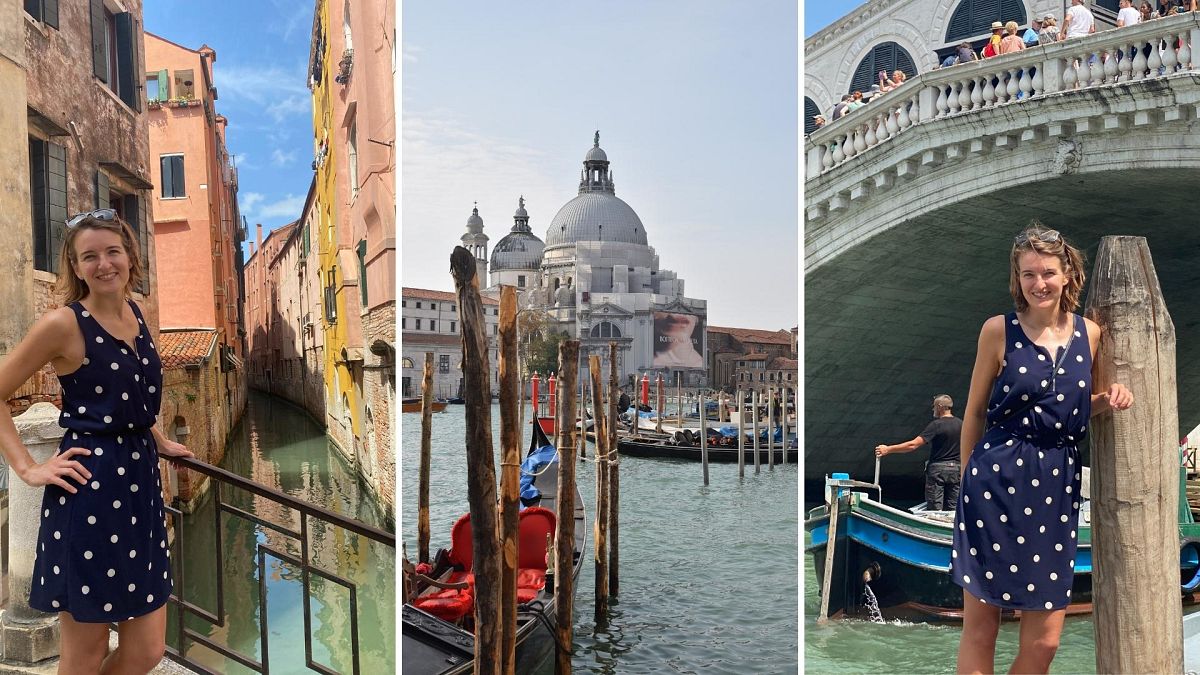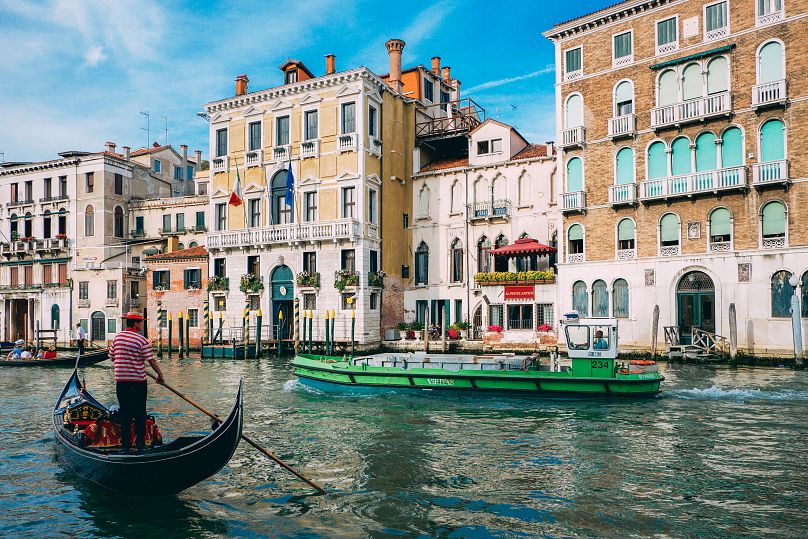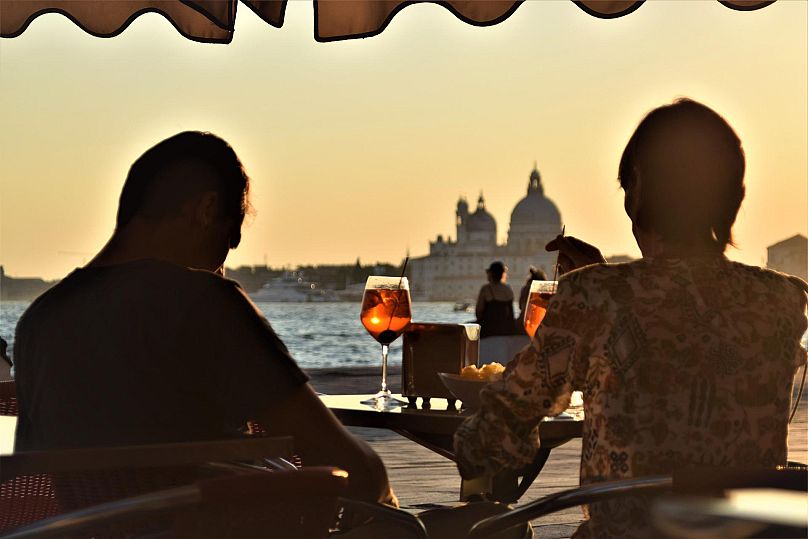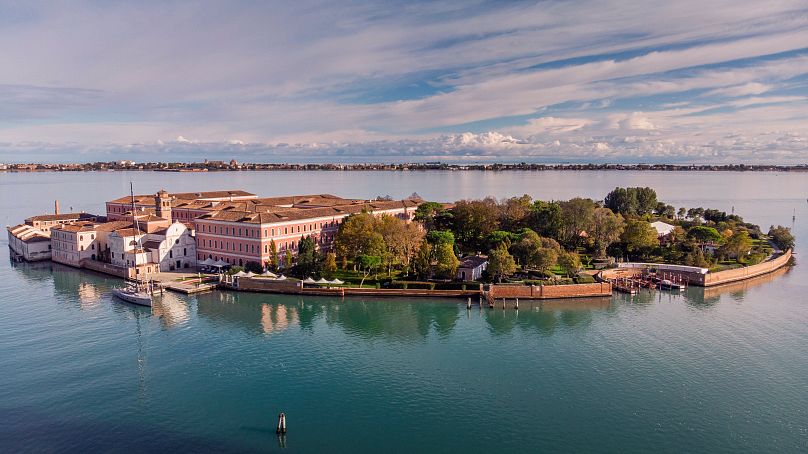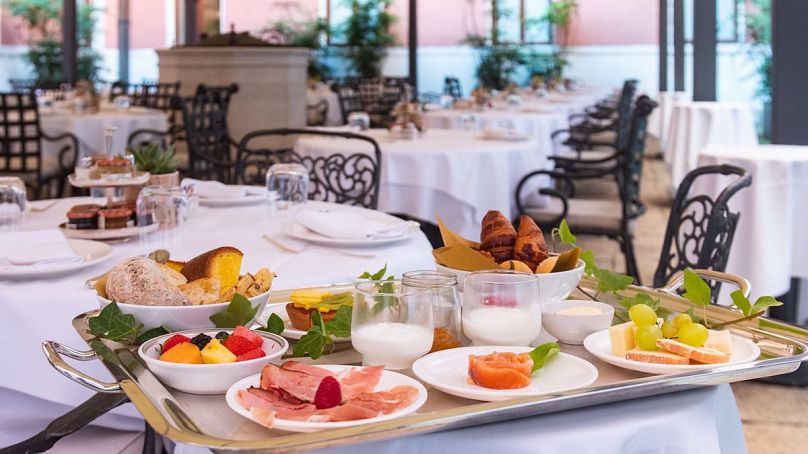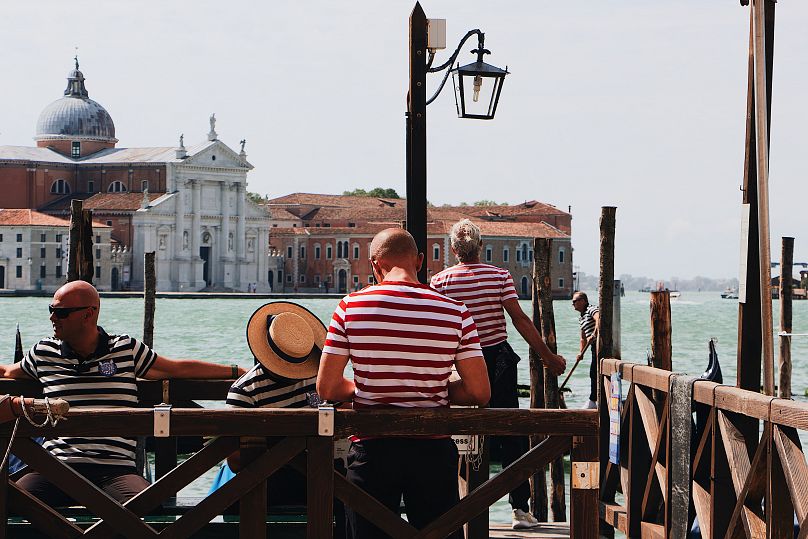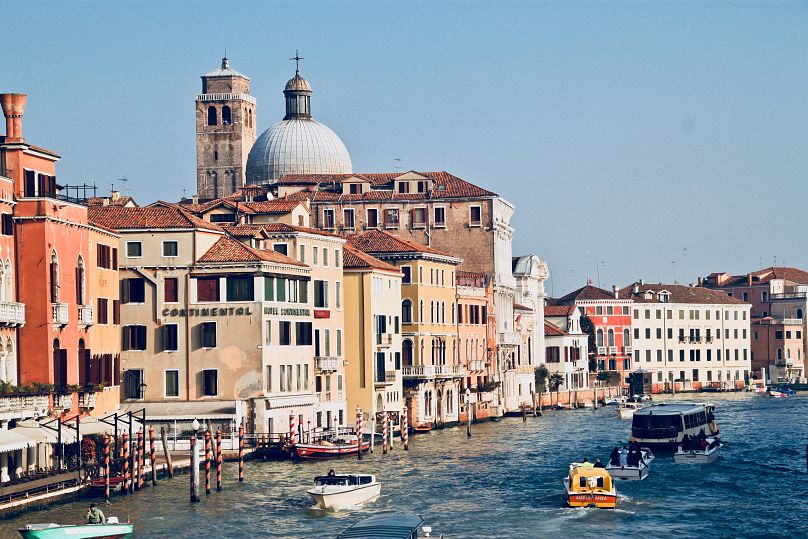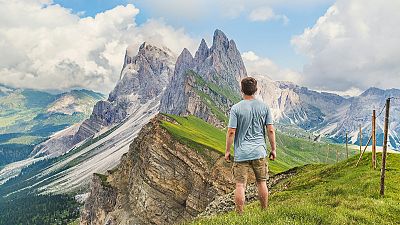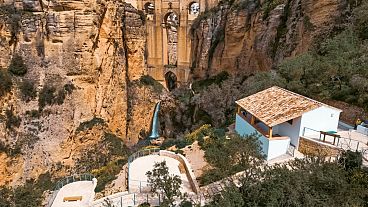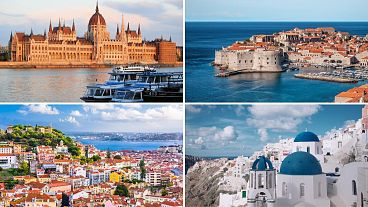The Grand Canal boats to avoid, the best aperitivo and the perfect private island hotel for a long weekend in Venice.
Venice needs little introduction. Everyone says you should visit at least once in your lifetime so I’d wanted to go for years. But Venice had never felt worthy of a special trip to Italy. Now that I’m living in Italy as an expat, it felt like the time to pop my Venice cherry.
I didn’t do much research or planning for my trip. This turned out to be my first mistake and a real rookie error. Aside from asking a couple of travel journalist friends for tips, I decided to just let the trip unfold.
The upshot? I liked Venice but I didn’t love it.
I think that by planning out my day differently, packing the right items and avoiding some of Venice’s tourist traps, I could love it next time.
So here is the perfect daily schedule for Venice. Read on for details on what to do each step of the way.
When is the best time to visit Venice?
My number one tip is to avoid Venice in the summer, so from June to September. I was there at the start of July and it was just far too hot.
Friends back home assume I must be used to the heat, with two Italian summers under my belt. Granted I am a hot weather person, but I live by the sea - Venice is a totally different ball game.
Yes, the city is surrounded by and arranged around water but there’s no sea breeze here. The streets you’ll spend your days walking seem to emit heat; you can feel it radiating off the old stones. Don’t get me wrong, Venice’s paved streets are beautiful, but they are not cooling.
Instead, I would suggest visiting Venice in winter or spring - with a few exceptions. I’ve heard it’s magical at Christmas so that would be a good time to go. But the city’s streets are packed for the annual carnival in the second two weeks of February so avoid that time if you hate crowds. Easter is a beautiful time all over Italy so April would be a great time to visit Venice.
The best schedule for the perfect summer’s day in Venice
If you decide to brave Venice during the summer, learn from the Italians and plan your day so that you’re indoors (in a semi-dark room, if you want to go full native) during the hottest hours of the day.
This is the perfect schedule for a summer’s day in Venice:
7.30am: Traditional breakfast of croissant and coffee in one of Venice’s many courtyard cafes
8.30-10.30am: Wander the iconic streets before the crowds start
10.30am-12.30pm: Sightseeing indoors, in a church, museum or art gallery
12.30-2pm: Lunch in a shaded courtyard
2-4.30pm: Back to your accommodation for an afternoon nap or swim in the pool
4.30-6.30pm: Grand Canal sightseeing with a few stops along the way
6.30pm: Apertivo time - a cool-off drink and snack at a bacaro
Evening: Dinner - remember you don’t have to worry about chilly evenings here. You can happily sit outdoors late into the evening.
Venice’s unmissable food and drinks for breakfast, lunch, dinner and aperitivo time
Since moving here, I’ve learnt that Italians don’t tend to eat a large breakfast. Whereas lunch and dinner are sit-down affairs, most Italians eat breakfast standing up in a cafe or street corner bar.
If you go for this option, a croissant or pastry is ideal with a coffee. I am not foolish enough to start prescribing coffee type because that is a national debate I do not want to wade into. However, as an Englishwoman it is my birthright to profess brick-coloured PG Tips with milk and no sugar as the only tea anyone should be drinking.
Italians don’t tend to go in for light lunches but if you really can’t stomach a big bowl of pasta you can opt for a 'tramezzino'. This is a white bread sandwich that is somehow far superior to those sold in Britain.
A more traditional lunch would begin with a pasta dish like spaghetti with clams or 'bigoli' in salsa made from anchovies and onions. Venice’s speciality is fish, so stick with seafood for a second course like grilled prawns or roast turbot.
Dinner is similar to lunch, but if you can squeeze in a starter too then try Venice’s classic 'sarde in saor.' This sweet and sour dish features sardines in an onion sauce.
Before dinner, don’t forget to partake in northern Italy’s much loved 'aperitivo' tradition. Early in the evening, head to a bar for a drink and small snack designed to whet your appetite for the coming meal.
The most popular aperitivo drink is a spritz made with bitters like Aperol, Campari or Venice’s own Select. You’ll see bars on every corner selling them. The cheapest I saw was €2 but they tend to be closer to €6. Accompany your drink with 'cicchetti', little snacks that can be anything from meatballs to mortadella on a small piece of bread.
The Fondamenta della Misericordia in the northern Cannaregio district is a lively place for aperitivo. Down the wide canalside street, there are several traditional Venetian bars called 'bacari', the perfect excuse for an aperitivo crawl.
Don’t forget to pack this one thing when heading to Venice
Venice is a stylish city but I beg you, don’t succumb to the temptation to pack your sexiest heels or smart leather shoes. There is only one word that should determine your footwear choice: comfort. Take the shoes that are so worn in you forget you’re wearing them. Even a pair that only slightly rubs will become your nemesis when pitted against Venice’s uneven paved streets.
“But what about the heels I want to wear with my flowy summer dress?” I hear you cry. Sure, take them- in your handbag, to be put on at the door of the restaurant. To reach anywhere in Venice, you’ll have a walk - remember there are no cars here. Yes, that really means no taxis (apart from costly water taxis), no Ubers, nothing. So it’s comfortable shoes from dawn til dusk.
Even in the shade, the sun in Venice is brutal because it has so much water and light-coloured buildings to reflect off. You’ll hardly blend in with the stylish Italians if you’re the colour of a tomato, and I’ve heard skin cancer isn’t a whole lot of fun.
So follow the classic Australian public health campaign when packing - slip, slop, slap. Slip on a top or shirt (the more skin it covers the better), slop on sun cream, and slap on a sun hat.
Where to stay in Venice: Treat yourself to a private island hotel
Even if you avoid Venice during the hottest hours of the day, it’s still an intense city. The sights, sounds and smells are exhilarating but if you’re anything like me, you’ll also crave some calm and quiet time to recharge.
This is what makes the hotels on the islands dotted around Venice’s lagoon so ideal. San Clemente Palace Kempinski is, as the name suggests, a former palace. It feels world’s away from bustling Venice but is in fact just a 10-minute boat ride. The hotel runs private boats to and fro throughout the day and into the evening.
The classical style of the palace has been retained in the acres of marble, sweeping staircases and polished wood in the bedrooms. There’s a beautiful church in the grounds - it doesn’t look like much from the outside but it’s well worth a quick look inside. It’s right by the boat jetty and Acquerello Restaurant so very easy to find.
The pool area is ideal for whiling away a hot afternoon, just you and your book. It’s right next to the Buddha Bar so cool drinks and food are on-hand. I recommend the sun loungers in the garden. This grassy area is so peaceful that you’d have no idea you’re just across the water from one of the most touristed places in Europe.
Breakfast in the leafy shaded courtyard of the Insieme Restaurant was my favourite part of the day. The buffet breakfast does not disappoint and it’s on until 11am at the weekends, allowing for a lie-in and time to sample every station.
Sustainable travel: Play your part in keeping Venice pristine
On the second day of my trip, I made my next mistake: moving at anything faster than a snail’s pace. Under the midday sun, I ran to make it back to San Marco pier for a waterbus that didn’t, in fact, leave for 20 minutes.
My lungs were burning, the blister on my foot had got even worse and I thought I might collapse from thirst. On the verge of tears, I retreated into the ‘Giardini Reali’ or Royal Gardens just behind San Marco pier. Initially, I just wanted some shade but I actually found a calm and cool haven that you wouldn’t believe is only 100m from one of the most famous squares in the world. Better still, I found the garden’s water fountains where I refilled my bottle and, once rehydrated, felt a little more human.
Venice has more than 100 free water fountains. They’re stationed close to all the tourist hotspots so they’re one of the easiest ways to do your bit for the environment. Venice has recently urged tourists to refill reusable water bottles at these fountains rather than buying single-use plastic water bottles. So they’ll save you money, as well as cutting down on rubbish that ends up in the canals.
Arriving in the city by train rather than plane is another brilliant way to reduce your carbon footprint. There are train connections into Venice from all the big cities in Italy, from where you can connect to cities all over Europe
You’ll arrive into Venezia Santa Lucia, the city’s main train station. It’s at the foot of the Grand Canal so you couldn’t be closer to the action, and you can jump on an ACTV waterbus from here to get to any other part of the city.
Another way to give back to Venice is to pay any fees that are asked of you. A new tourist tax is being introduced in 2023 so if you fall into the categories of people who need to pay this make sure you do.
Venice is not a cheap destination so I can understand people not wanting added costs. But preserving the beauty of its many historic buildings and its viability as a liveable city comes at a cost. Make sure we’re not the last generation who gets to enjoy it.
Grand Canal: Skip the gondolas and take this type of boat instead
You always hear about the Grand Canal but I hadn’t grasped just how much it acts as the artery of the city. It’s the lifeblood of every industry here - with no cars or roads everything has to be transported in a boat on the canals. Postal deliveries, equipment, rubbish, building materials, workers and everything else you can think of rely on the canals to reach all the homes and businesses here.
When I was sitting by the Grand Canal for dinner one evening, an ambulance speed boat, complete with siren, flew past, paramedics poised onboard ready to jump off. It was soon followed by a rowing team out for an evening training session. Water taxis are also frequent.
Then come the gondolas, of course. One of the symbols of the city, but sadly best avoided if you’re on a budget. At €80 for half an hour they’re insanely expensive.
The gondoliers pushing tourists around on them look hot and worn out, not least because they have to wear a uniform of the famous stripy t-shirt plus long trousers. They must get close to overheating on days when everyone else is in shorts and sleeveless tops. Plus, you’ll get a fairly generic tour of the city, often finding yourself in a gondola traffic jam around popular sights.
My top alternative is to skip the gondolas and take the ACTV waterbuses instead. These are the main type of public transport that Venice locals use every day - they hop and off them like you would use a local bus. ACTV has 30 different lines so you can use them to get anywhere you want to go, and can hop on and off at one of the 120 floating stops - don’t worry, they’re very stable. Full details on ACTV lines are here. Oh, and stand or sit at the back of the boat for shade and the best views.
Just remember that Venice’s residents use these buses for essential journeys like to school and work. Don’t block the passage to get a good photo and, if there’s a queue at the waterbus stop, let elderly people in front so they don’t have to wait for the next boat.
You’ll use the ACTV waterbuses more than you think, especially when it’s hot and you don’t want to walk between the sights. So my top tip is to buy a one day or multi day pass. These give you access to ACTV buses, trains, trams and boats. They make the price of each journey cheaper and mean you don’t have to queue for a ticket each time. Details of ACTV single tickets and passes are available here.
Ruth Wright was a guest of San Clemente Palace Kempinski.
